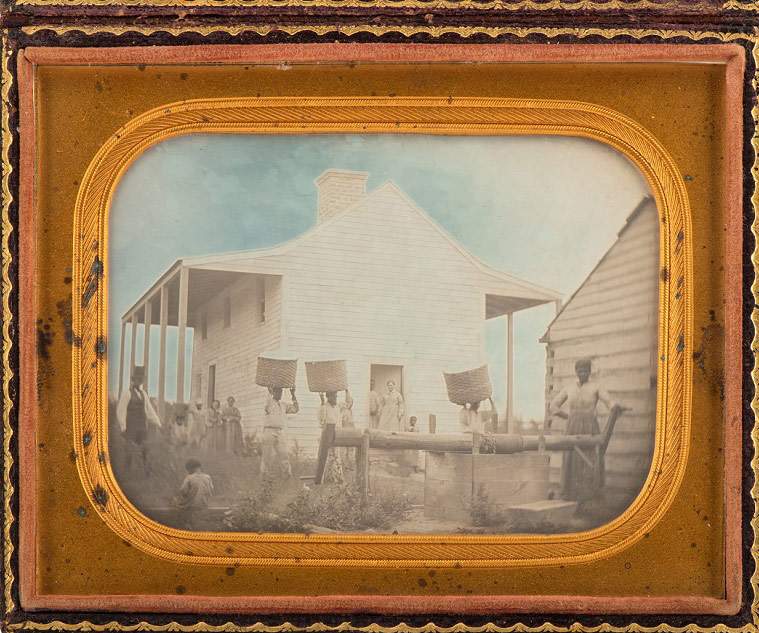The Nelson-Atkins Museum in Kansas City, Missouri, United States, has acquired an important daguerreotype, believed to be the oldest image depicting African American slaves. The image was purchased by the Hall Family Foundation on behalf of the museum in late November. It is most likely a photograph dating from the 1850s and is assumed to have been taken in Greene County, Georgia, on the estate of landowner Samuel T. Gentry. The location would make the daguerreotype even rarer since most photographs of African American slaves were taken on coastal plantations and not in the interior. We have no idea who the photographer was who made the image, while it is highly likely that the patron was Gentry himself, who wanted to demonstrate with this photograph the prosperity of his business.
The Hall Family Foundation purchased the photograph in an auction at Cowan ’s for the sum of $324,500 (the initial estimate was between $100,000 and $150,000).The high price is due to theuniqueness of the image, since no other daguerreotypes from the 1850s depicting slaves are known. The photograph was recently unearthed among the possessions of Charles Gentry Jr. a descendant of Samuel T. Gentry, a resident of Austin, Texas. Documentary research determined that Samuel T. Gentry (who, in the photo, may be the person in the top hat on the upper left) owned ten slaves-the exact number of people captured in the photo.
“This important acquisition,” remarked Julián Zugazagoitia, director of the museum, “makes a great contribution to American history and American photography. We are honored that this image, which was previously unknown, will join our collection of daguerreotypes, and we are grateful to the Hall Family Foundation for its generosity and foresight.”
“Our collection of 19th-century American photography,” says Keith F. Davis, senior curator of the museum’s photography section, “plays a key role in our photographic collections: we have been interested in American daguerreotypes since 1995. The history that these diverse images document is complex, sometimes painful, often surprising. All of these works are vital to a deeper understanding of both the experience and achievements of American photographers.” The image taken in Georgia, Davies specifies, “is a testament to the criminal history of slavery, and is significant both for the power of its content and for its technical and aesthetic sophistication. It is an unforgettable portrait of an era and a way of life that must never again be forgotten or forgiven. At the same time, the image expands our understanding of the history of American photography. For a long time we believed that daguerreotypes like these were perhaps being produced in the 1850s-we now know for certain that there was at least one.”
“Our collection of daguerreotypes,” says Jane Aspinwall, curator at the Nelson-Atkins Museum’s photography section, “consists of much abolitionist material-Frederick Douglass, Harriet Beecher Stowe, and Lucretia Mott are just a few examples. This rare and exceptional work is a considerable addition to a vital part of the museum’s collection. We have held many exhibitions of daguerreotypes over the past fifteen years-there will be two more in the near future. Our program aims to broaden the collective understanding of 19th-century history and photography through this significant photographic process: the daguerreotype.”
Pictured is the daguerreotype acquired by the Nelson-Atkins Museum.
 |
| The Nelson-Atkins Museum in Kansas City acquires the oldest known photograph depicting slaves in America |
Warning: the translation into English of the original Italian article was created using automatic tools. We undertake to review all articles, but we do not guarantee the total absence of inaccuracies in the translation due to the program. You can find the original by clicking on the ITA button. If you find any mistake,please contact us.